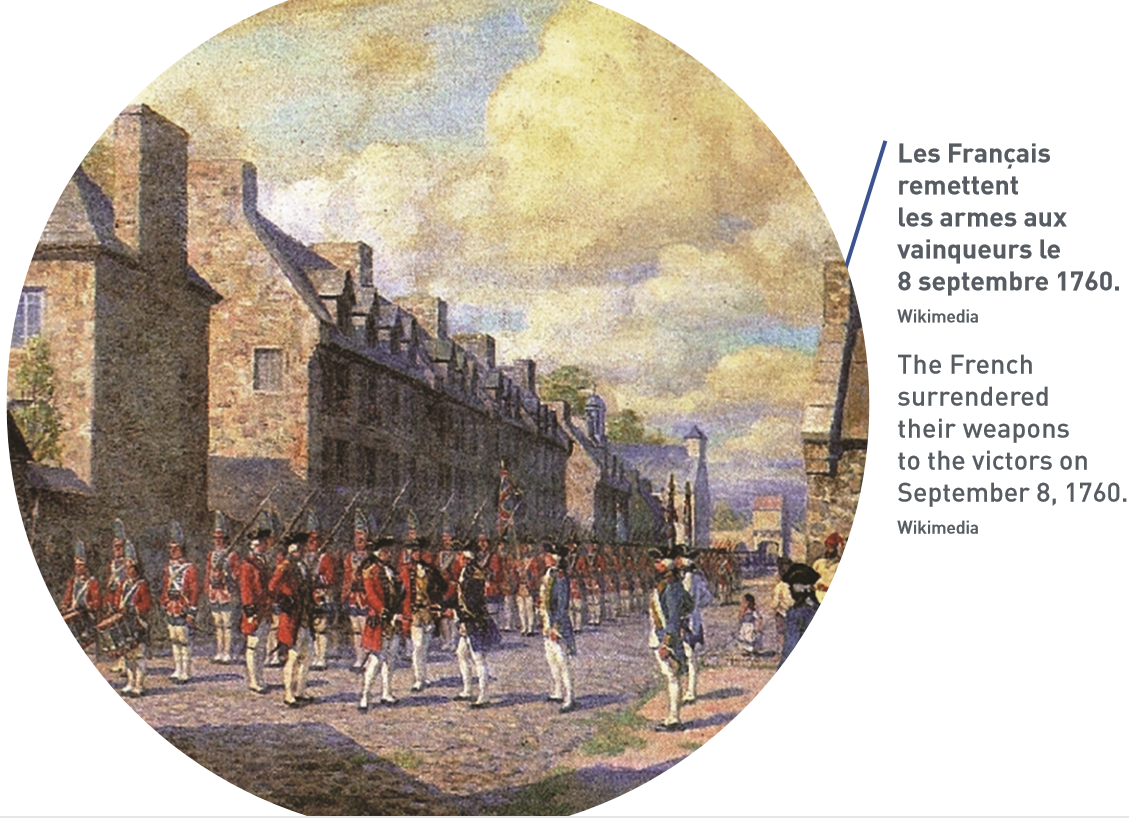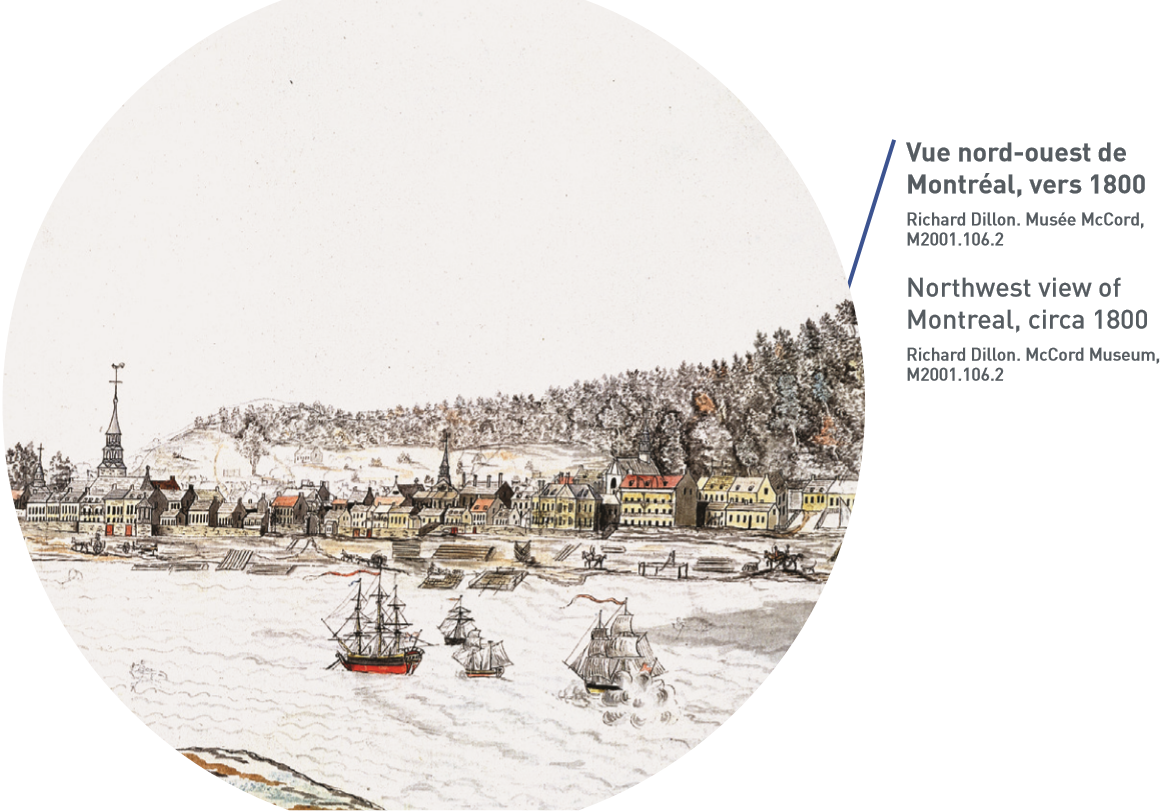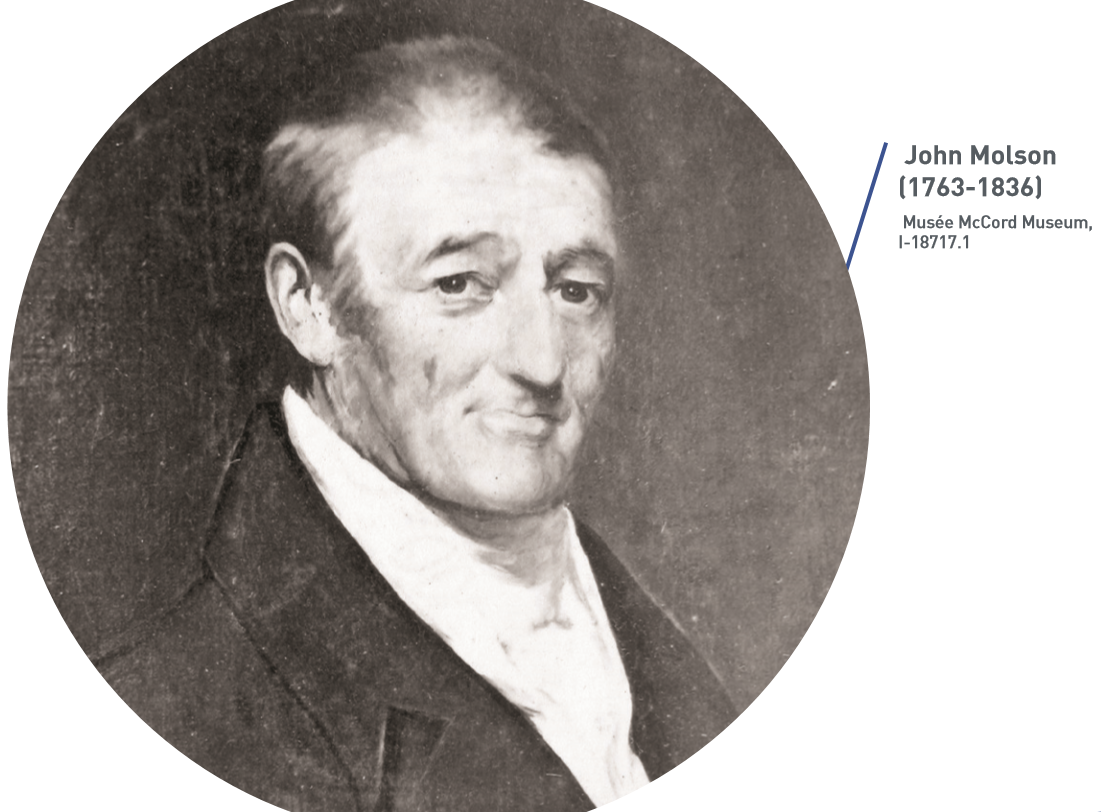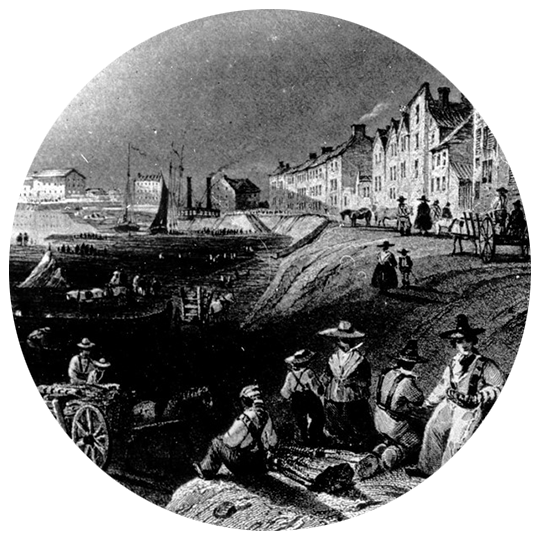
Timeline and detailed history
The Port of Montreal is a privileged witness to the creation of Montreal, its economic development and the arrival of immigrants to the city. Here are the milestones of its rich history.
Paul de Chomedey de Maisonneuve, Jeanne Mance and 40 French colonists settled on the Island of Montreal, which had been known to Europeans since Jacques Cartier’s visit in 1535. For more than 200 years, small vessels coming to Montreal would dock along the shore, at the foot of the small city. Larger ships that could overcome the strong Sainte-Marie rapids, where the current Jacques-Cartier Bridge is located, would stop at Île Normant to unload their cargo. The cargo would then be transported into the city by merchants. Montreal capitulates on September 7, 1760. The British refused to grant the honours of war to the French troops. Lévis burned its flags and New France was a thing of the past. Around 1800, Montreal still did not have a port. The fortifications around the city were gradually taken down and the merchants, mostly lumber merchants, occupied nearly all of the shoreline. On August 19, 1809, Hart Logan’s Shipyard, located near the Molson Brewery, launched the Accommodation, the first ship with mechanical propulsion to navigate the St. Lawrence River. Created by an obstinate John Molson and the know-how of the Forges du Saint Maurice, this steamer is capable of transporting cargo and passengers faster between Montreal and Quebec City. Constructing such a vessel was deemed advanced technology, similar to designing and building an aircraft today. But Molson did not stop there. By 1830, he owned 36 ships, the largest fleet of steamers in North America. The golden age of steamers culminated in 1845 when John Molson Jr. launched the Montréal and the Québec, which could make the Montreal-Quebec City run in twelve hours. Measuring 13.4 km long, 14.6 m wide and 1.4 m deep, this seven lock canal made it possible to bypass the dangerous Lachine Rapids between the Port and Lake Saint-Louis. Expanded twice in the 19th century, it played an important role in the development of Montreal, Ontario and Canada. Closed to commercial shipping in 1970, it was replaced by the St. Lawrence Seaway. The Trade Board – the current Chamber of Commerce of Metropolitan Montreal – wanted to construct permanent wharves and a flood-retaining wall, pressing the government to dredge the river. The Port truly takes flight in the 1830s when merchants turn to the exporting of grains, manufactured goods, foodstuffs, etc. Until 1964, the Gold-Headed Cane was used to encourage the return of shipping in the spring. Today, the Cane is handed to the captain of the first oceanic vessel to reach the Port at the beginning of each year, a trophy desired by captains from many countries. Four years of major dredging work in the River now allows for the passage of larger steamers, some of which have draughts exceeding 4 metres. During the 1830s, Hugh Allan, a Scottish-born businessman, bought several ships and founded the Allan Line, which 20 years later would ensure regular shipping between Montreal and British ports. First link with the south shore, this long tube of components prefabricated in England is laid on ice-breaking pillars with steel cutwaters. Longest rail bridge in the world at 2,790 m, it is declared the Eighth Wonder of the World. A new country is born in 1867. Canada, at that time, has four provinces and was founded on the rules of federalism, democracy, the rule of law and the respect of minorities. That same year, the Port of Montreal broke a record of 500 ships. In the mid 19th century, industrialization in Montreal is in full swing. The port is buzzing with a myriad of activities, but only for the eight months when the River is free of ice. Steamers are interspersed with sailing ships docked at wharves laid out parallel to Rue de la Commune. In 1871, the first locomotive arrived on the wharves, making it possible to connect the port to the back country using rail. With the increasing port traffic in Montreal, the Canadian government decided to extend the depth of the waterway between Quebec City and Montreal to 7.5 m and its width to 90 m. The train leaving Dalhousie Station on June 28, 1886. This regular service by Canadian Pacific connected Eastern and Western Canada, ensuring the country’s transportation independence. The MacKay Pier was constructed in 1898 to contend with spring ice jams. The three concrete wharves were equipped with steel-structure hangars. In 1967, the MacKay Pier became Cité du Havre. In the early 20th century, five large silos were constructed to receive Western Canadian grain transported to Montreal by train and laker in order to be exported by ship to Europe, Africa and elsewhere. Gigantic hangars are built between 1904 and 1908 on the raised wharves, safe from ice and flooding. Their steel frames and metallic cladding make it possible to store more cargo. At the time, elevator no. 2 was the highest structure in Montreal. It was the first concrete silo and the largest on the Atlantic East Coast, doubling Montreal’s port capacity. Grain silos are used for grain imports/ exports. The international grain trade grew between 1910 and 1920, forcing exporters and mills to innovate in the areas of grain handling and storage, loading and unloading speeds and the storage of larger volumes. They succeeded! In 1923, architect Le Corbusier judged the Montreal silos to be in perfect balance with their function. Today, elevator no. 4 is the last grain terminal in Montreal with a capacity of 262,000 tons, 350 silos and a handling capacity of 5,500 tons per hour. Erected in accordance with the plans developed by Montreal engineer Paul Leclaire, the Clock Tower marks the entrance to the port. It commemorates the sailors of the Merchant Navy who lost their lives at sea during the world wars. The nine floors of immense refrigerated rooms in this warehouse keep meat, cheese, fruit, vegetables and other perishable goods. The process: A calcium chloride brine is brought down to a very low temperature through the expansion of anhydrous ammonia. A neighbouring building houses the refrigeration plant which produces the electricity needed for the compressors and the port’s 9 new electric train locomotives as well as the 5 tons of ice needed each day, made in blocks weighing 45 kg. Entreposage. Montreal at that time was exporting 135 million bushels of grain, exceeding by a large margin the 75 million bushels exported by New York, which explains why silos with such large capacities were built, the first one in 1904 and the last one in 1982. Six months after the stock market crash in 1929, the Jacques Cartier Bridge opened to vehicle traffic and the port was booming. However, the Depression of the 1930s would temporarily lead to a decline at the port as well as the grain market. The federal Department of Transport was created in 1935. The following year, it created the National Harbours Board to administer Canadian ports and Trans-Canada Airlines – which would later become Air Canada – for air transportation. With the economic recovery after the Second World War, the Port of Montreal went through development. New industries fuelled it and more imported goods came in to satisfy the increased purchasing power of Quebeckers and Canadians. An important link in economic and social history, the port and its facilities are testament to the many contributions of port activities to the growth and development of Montreal, Quebec and Canada. They are part of the Site patrimonial du Vieux-Montréal and the Lachine Canal National Historic Site. The Danish cargo ship Helga Dan was the first ship to reach the Port of Montreal in early January after regular work by Canadian Coast Guard icebreakers. The International and Universal Exposition Man and His World was in full swing from April to October; it presented 62 countries and welcomed more than 50 million visitors to Île Sainte-Hélène and Île Notre-Dame. The latter was created in 10 months using fill extracted from the tunnels being dug for the Montreal Metro. It is the largest worksite ever undertaken in Quebec over such a short period: more than 800 buildings, Habitat 67, La Ronde and others. 1967 also saw the inauguration of the Iberville Marine Terminal, here on the Alexandra Pier. In 1967, the Port of Montreal handled its first container, an invention by Malcom McLean, in 1956, to eliminate bulk cargo transhipments that took too long. First used on the U.S. East Coast, it made its way across the Atlantic in 1966 and its use has since grown exponentially. Both the basic and specialized containers use the same securing system: corner pieces at the top and twist locks securing them to the frames of vehicles or handling systems. This terminal would be expanded and would become the Cast Terminal in 1972. Another important event in1968: Manchester Liners began offering a weekly container shipping service to the UK. Open for 11 years at this point, the St. Lawrence Seaway accommodates more and more ships of all sizes, even the smaller ones, which gradually stop using the Lachine Canal. A million containers have already been received or exported from the Port of Montreal. Beginning of construction on the second terminal, the Racine Terminal, which will be inaugurated in 1978. The last few decades of the 20th century would bring many changes to the Port of Montreal. In 1978, the port transferred its oldest facilities to the Old Port, near Old Montreal. Later, new facilities were inaugurated at the Old Port, during the 350th anniversary celebrations for the city, in 1992. Five wharves were modified – Alexandra, King Edward, Jacques Cartier, as well as the Horloge and Convoyeurs wharves – while certain warehouses, grain silos and buildings were demolished. The organization reports to the Canada Ports Corporation, a modernized incarnation of the National Harbours Board, which has governed the Port of Montreal since 1936. Given the lack of space at the Racine Terminal, a new large-capacity, high-efficiency terminal was built at the Port of Montreal, barely 20 years after the first container had arrived. Improvements in surveying and especially dredging techniques have now enabled government authorities to expand and deepen the St. Lawrence, providing better access to the Port of Montreal. The Montreal Port Authority was created under the Canada Marine Act, passed on June 11, 1998. The port went into the year 2000 with a stunning record: 9 million tons of cargo and nearly a million containers handled. Proper management by the Montreal Port Authority, created 7 years ago, bears dividends. This record shows an appreciable increase in the volume of cargo handled, both in terms of bulk and containers. At 183 m long and 40 m wide, the Stena Paris carries 30 to 45% more than regular tankers of the same length. It is even bigger than Panamax oil tankers which are 32 m wide. This navigation system enables the pilots who come onboard ships in the St. Lawrence to have access, in real time, to all the relevant information needed to navigate the River. St. Lawrence pilots can access the Canadian Coast Guard portal and with the most recent data: channel status, shoals, ice movements, navigation notices, etc. Connected to the AIS land-ship international communication system, pilots are now aware at all times of their position and that of other ships in the sector, water levels, tides, etc. Pilots can therefore more easily steer ships in difficult areas and can pass other ships safely where the channel is narrow, in bad weather or when there is nearly no visibility at all. CargoM brings together players in the Greater Montreal logistics and transportation sectors around common objectives and joint action focused on increasing cohesion, competitiveness and reach. Founding member of CargoM, the Port of Montreal is at the heart of this hub. Some Port of Montreal terminals can now accommodate post Panamax ships, since they are now equipped with cranes capable of loading and unloading these gigantic cargo ships. Shipyards are now constructing more and more post-Panamax ships that are capable of getting through the Panama Canal which has been expanded to 49 m since 2016. For its part, the St. Lawrence channel has been able to accommodate post-Panamax ships that are up to 44 m wide, with certain restrictions: specific areas in the channel where meeting up with or passing other ships is tight and when there are strong crosswinds. They must then slow down and yield. 2016 was very good! In addition to the new record, there was the inauguration of the Viau container terminal and the announced renovations to the Alexandra Pier and its cruise ship terminal. The opening of the renovated terminal for cruise ships was on June 10, 2017 whereas the other public functions of the pier, renamed Grand Quay, were inaugurated the following year on June 3, 2018. It includes the Port Centre, the first of its kind in Quebec, with the interactive All aboard! exhibition. To prepare the Strategic Plan 2023-2027, the MPA conducted the largest consultation process in its history, entitled Port 2030. The public, stakeholders, neighbours, partners, business people, municipal and regional governments, as well as sectoral experts were invited to contribute to the thought process. An online consultation platform was set up and nine ideation workshops and round tables were organized to explore the themes of the environment, the economy, social issues and innovation. The process resulted in 379 external contributions. The inauguration of the Port of Montreal Tower represents the culmination of a vast construction project that has lasted almost 10 years, and the culmination of the major rehabilitation of Alexandra Pier. Standing 65 metres high, this majestic glass tower offers a spectacular observatory over the metropolis and the river, a unique interactive experience, educational capsules on the city of Montreal and its port, and a vertiginous glass cage. The year was also marked by the inauguration of the Vickers overpass.Timeline and detailed history
1642

May 17, founding of Ville-Marie, now Montreal
1616-1840
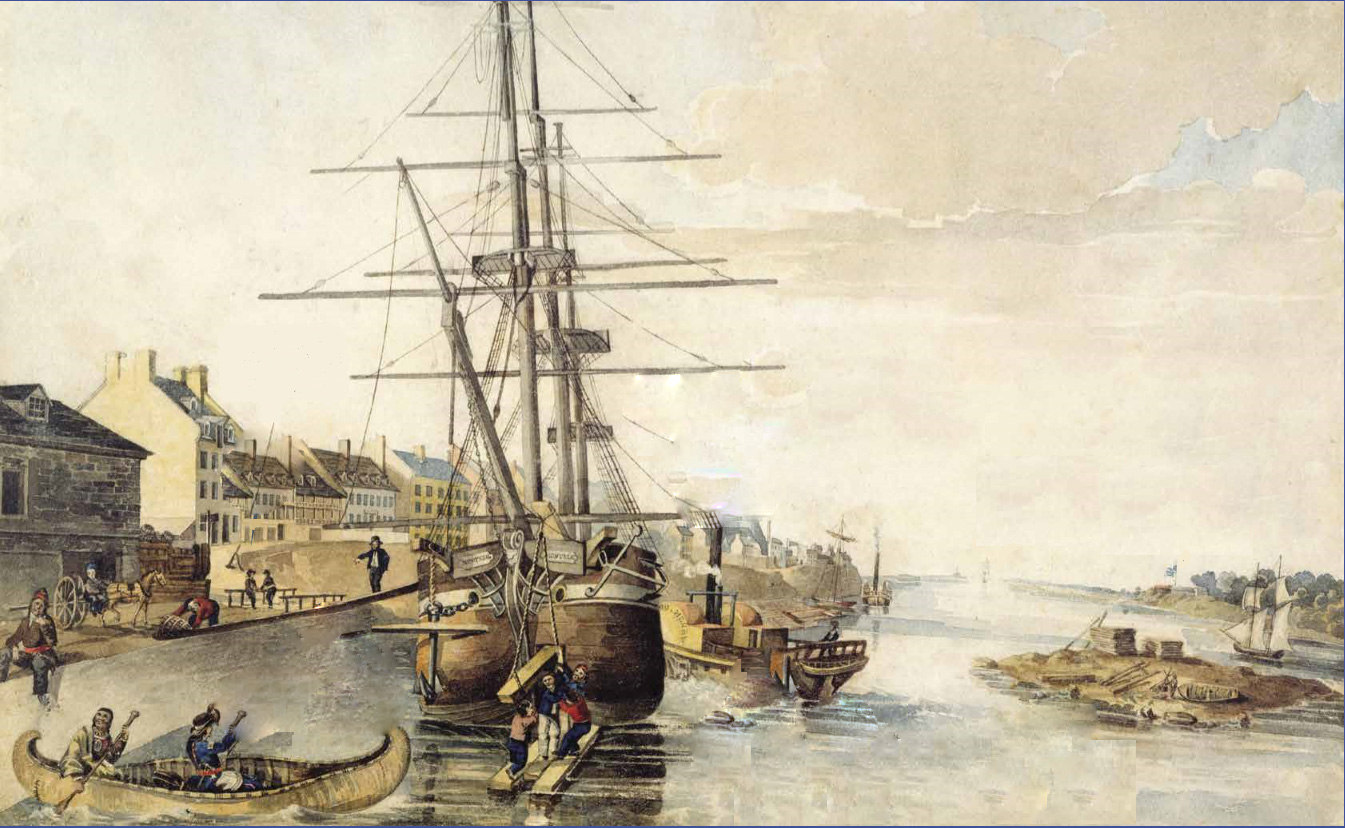
1760
Conquest of Montreal by British forces
1800-1830
The merchants built wharves in front of their warehouses.
1809
The Accommodation, the first Canadian steamer, built by John Molson
1825
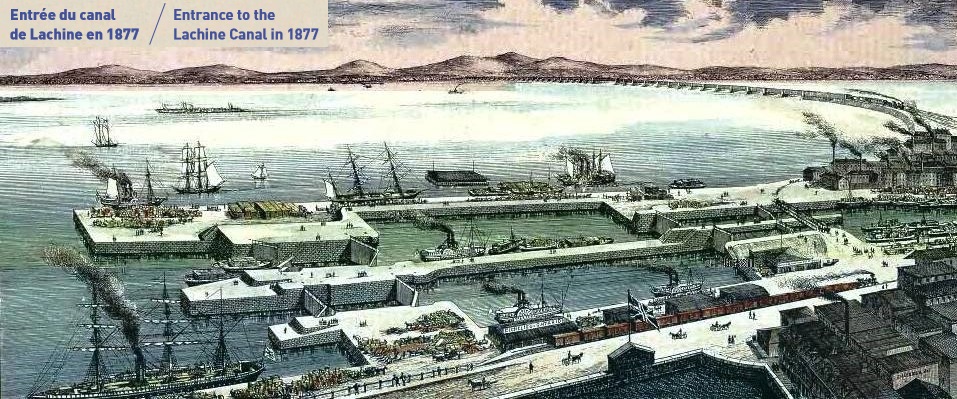
Opening of the Lachine Canal
1830
Creation of the Harbour Commission by the Montreal Trade Board to expand and improve the Port
1832
End of construction on the permanent wharves stretching over a kilometre
1840
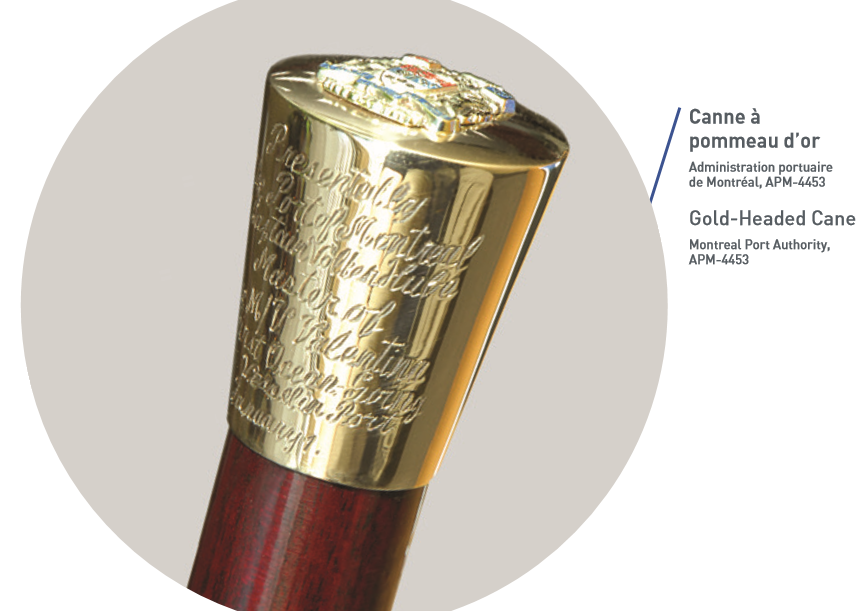
1854
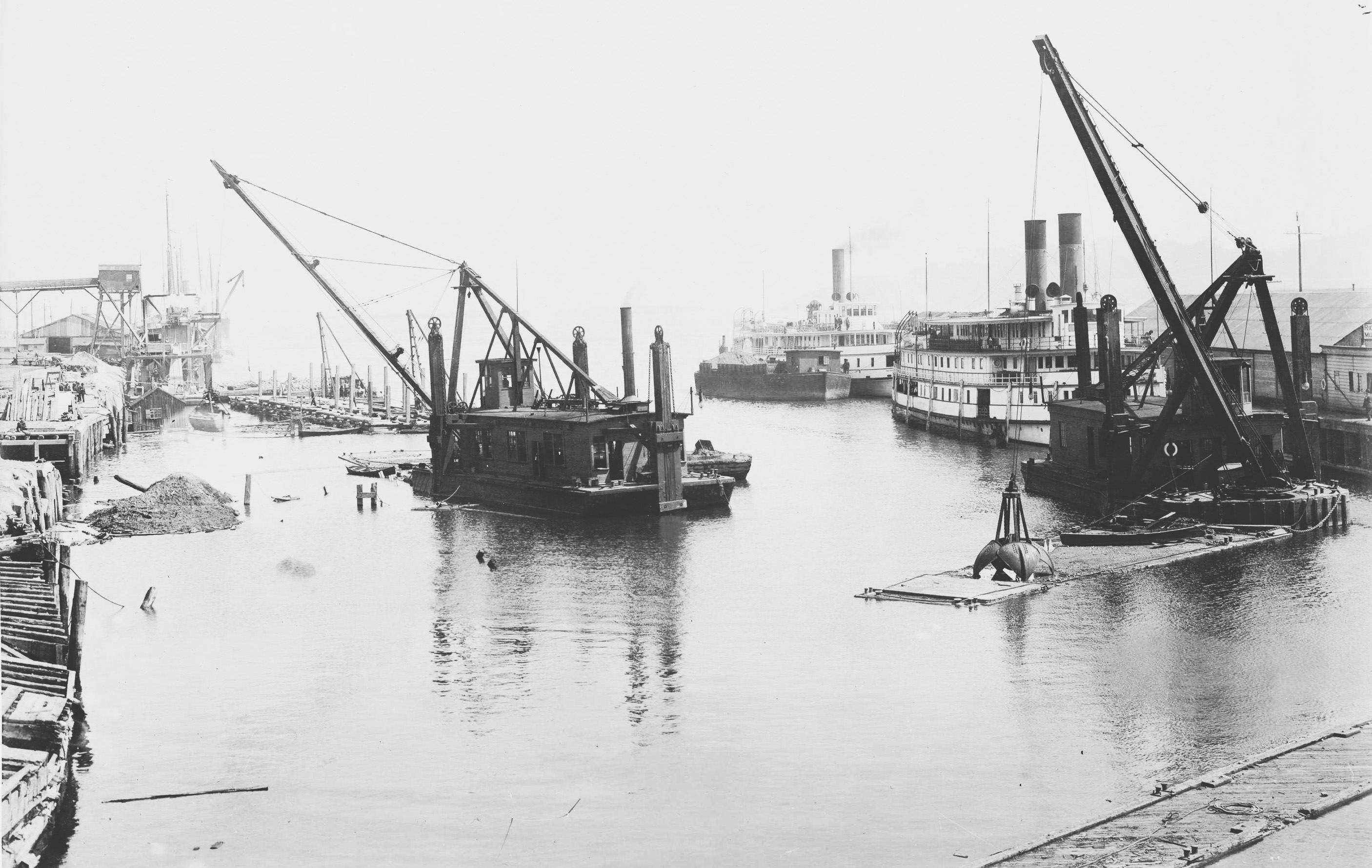 End of the channel dredging between Quebec City and Montreal: depth of 4.9 m and width of 76.2 m
End of the channel dredging between Quebec City and Montreal: depth of 4.9 m and width of 76.2 m
1856
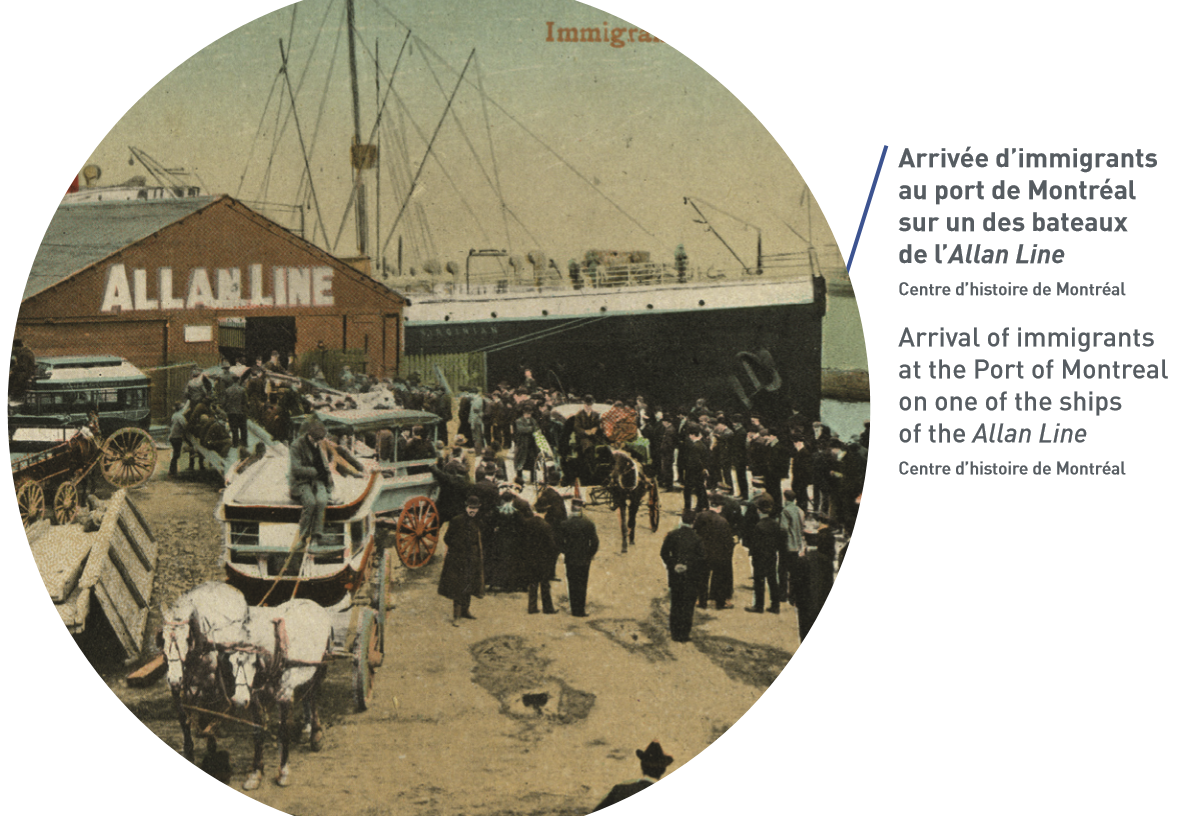
1859
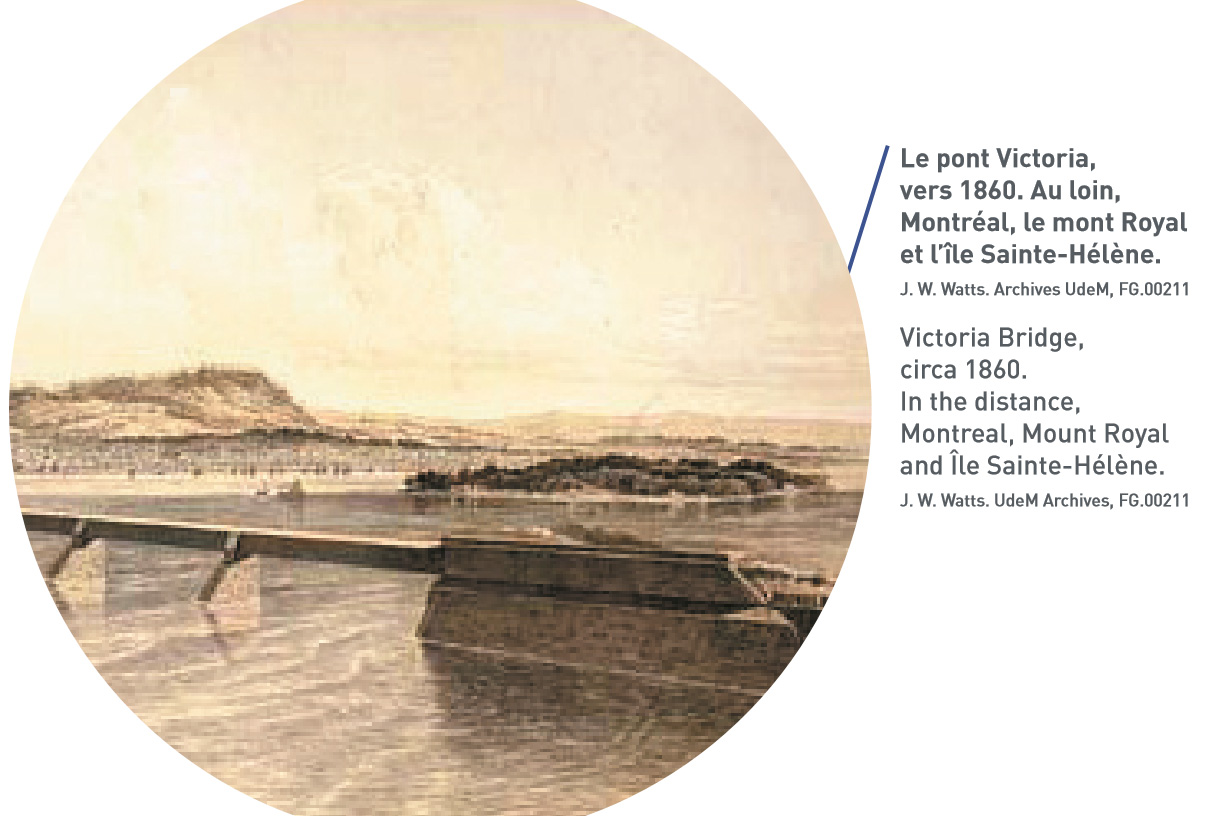 With the opening of Victoria Bridge, Montreal became a hub for rail and marine transportation in Canada
With the opening of Victoria Bridge, Montreal became a hub for rail and marine transportation in Canada
1867
A first: 500 ships in Montreal in the founding year of Canadian Federation
1875
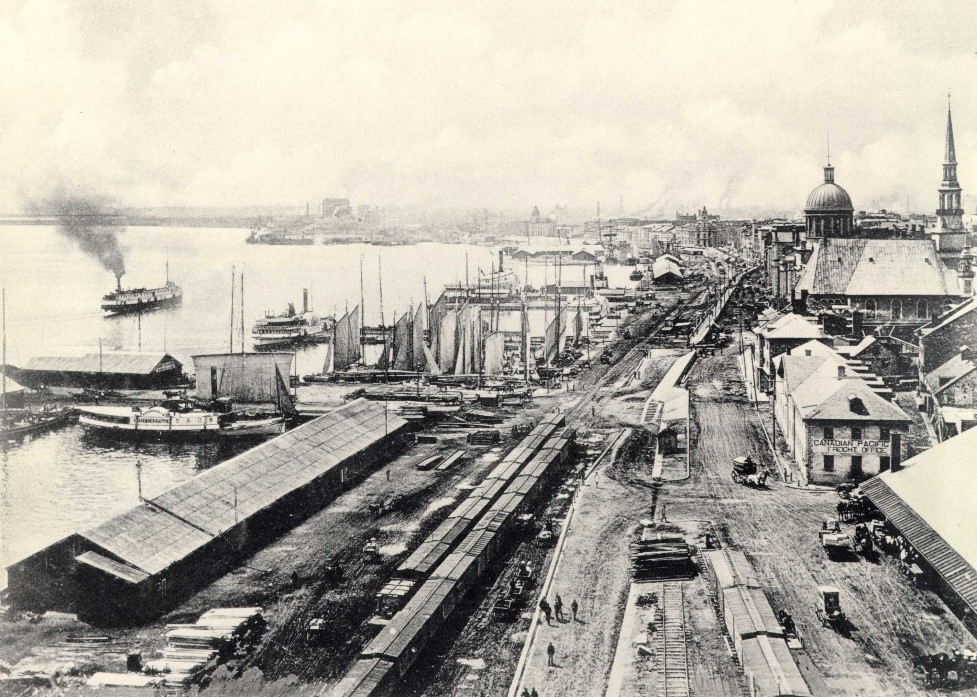
1883-1885
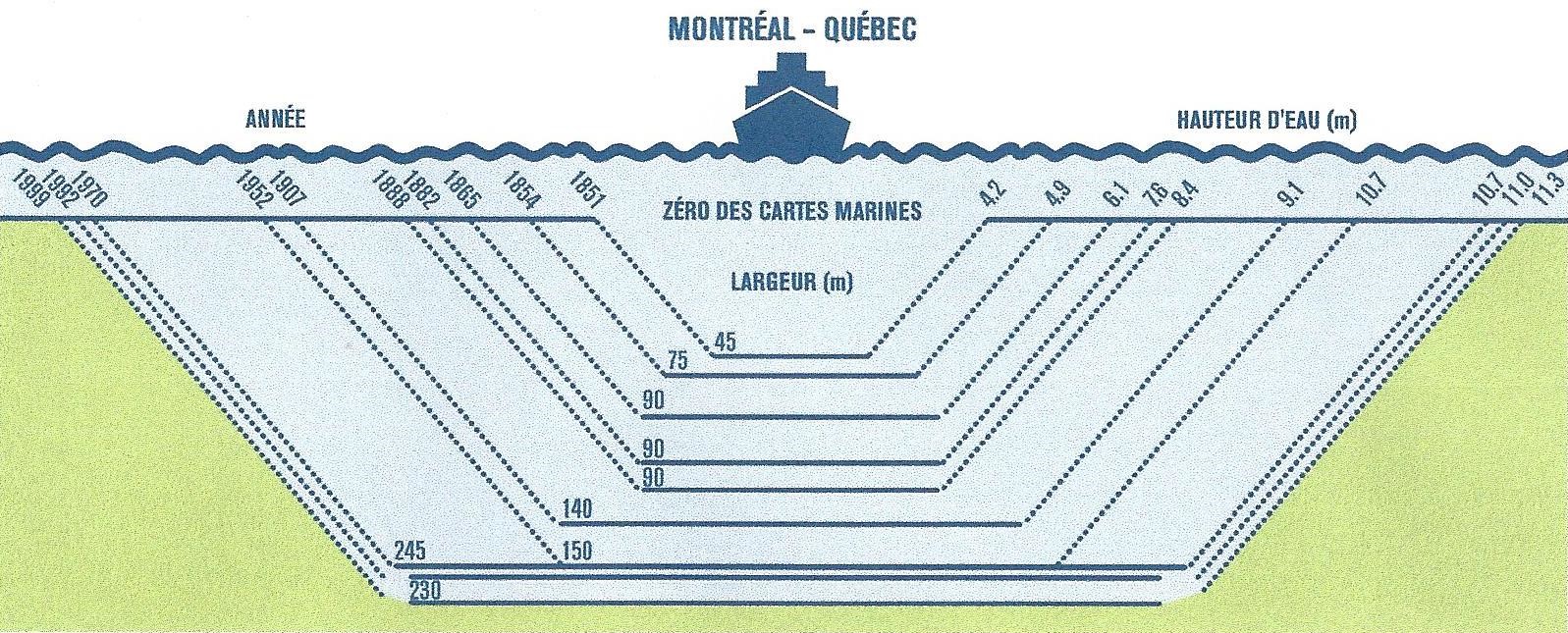 Major dredging work along the length of the navigation channel between Quebec City and Montreal
Major dredging work along the length of the navigation channel between Quebec City and Montreal
1886
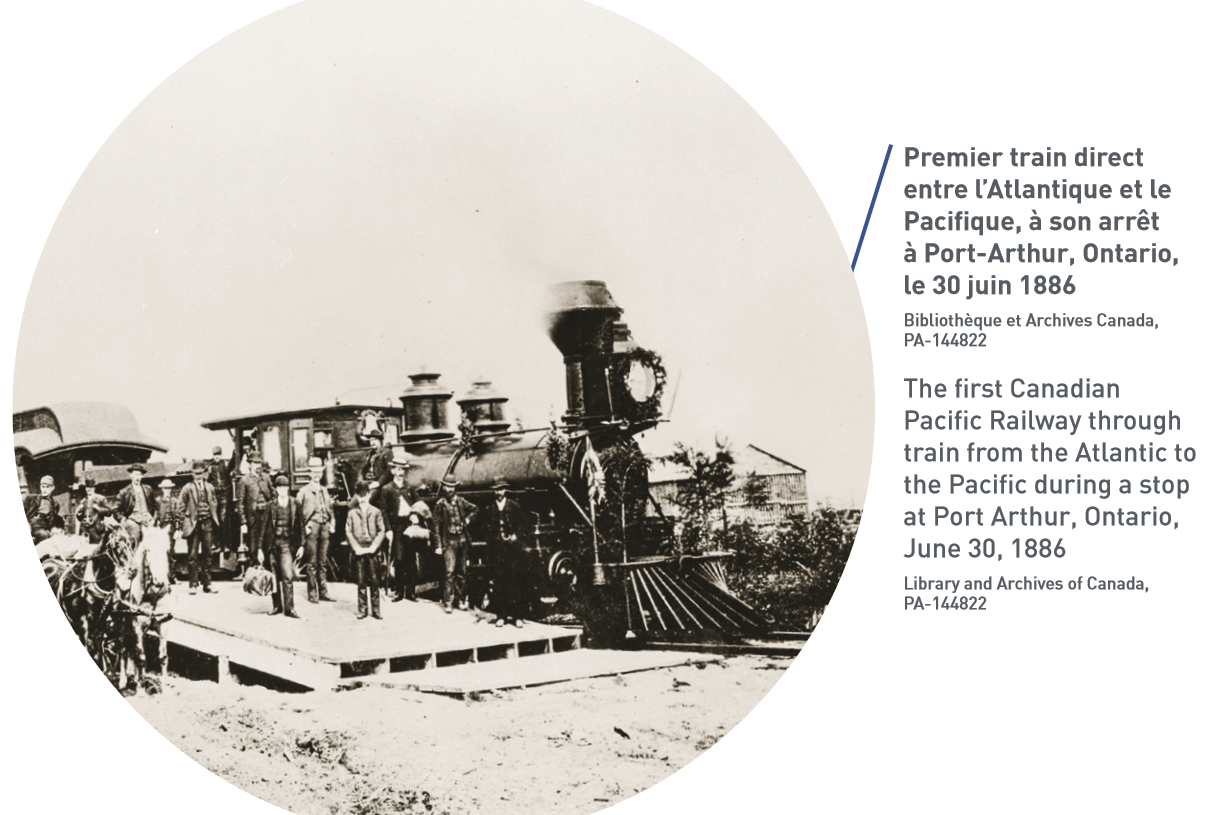
1898-1902
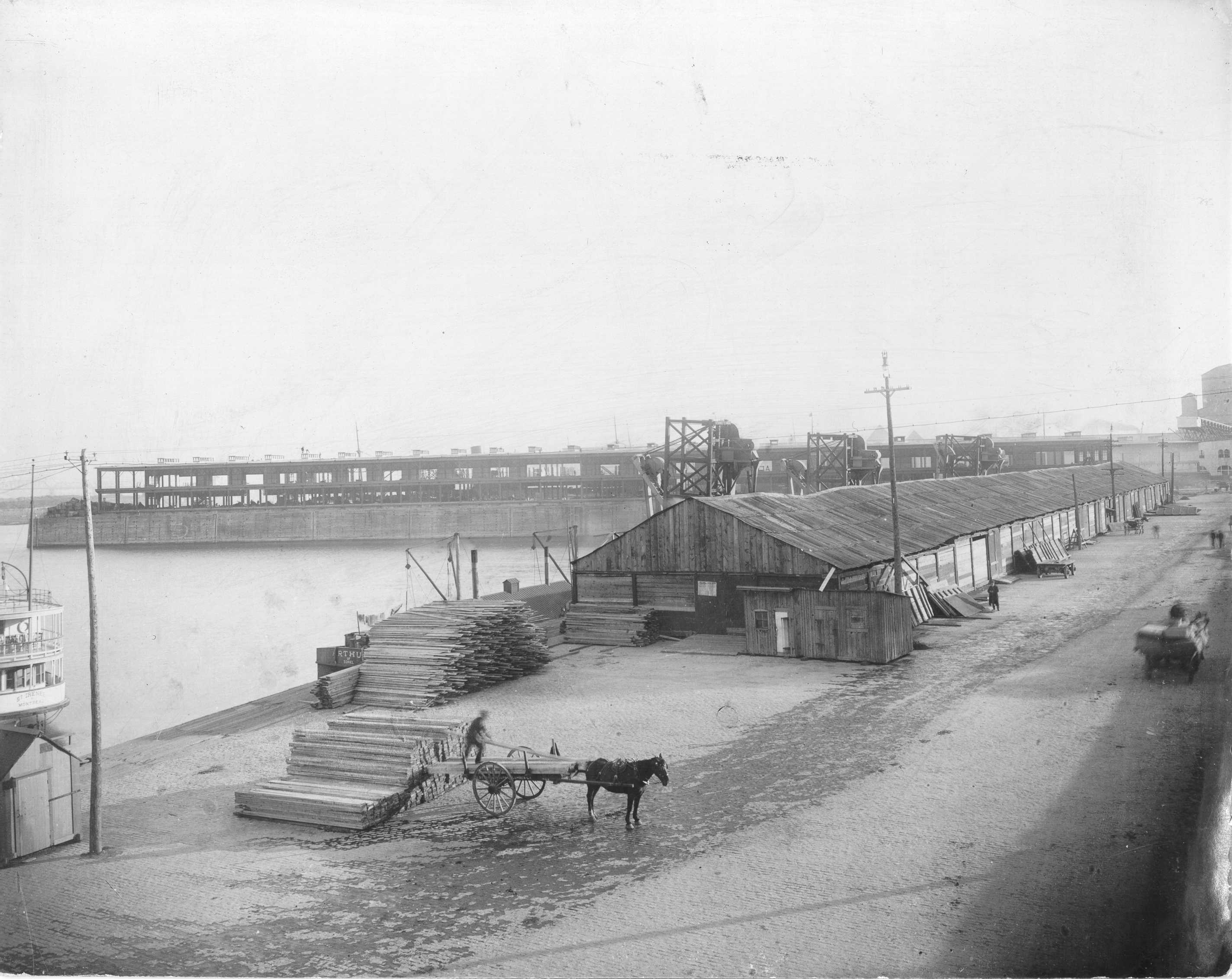 Construction of the Jacques Cartier (1898-1899), Alexandra (1899-1901) and King Edward (1901-1903) wharves
Construction of the Jacques Cartier (1898-1899), Alexandra (1899-1901) and King Edward (1901-1903) wharves
1902
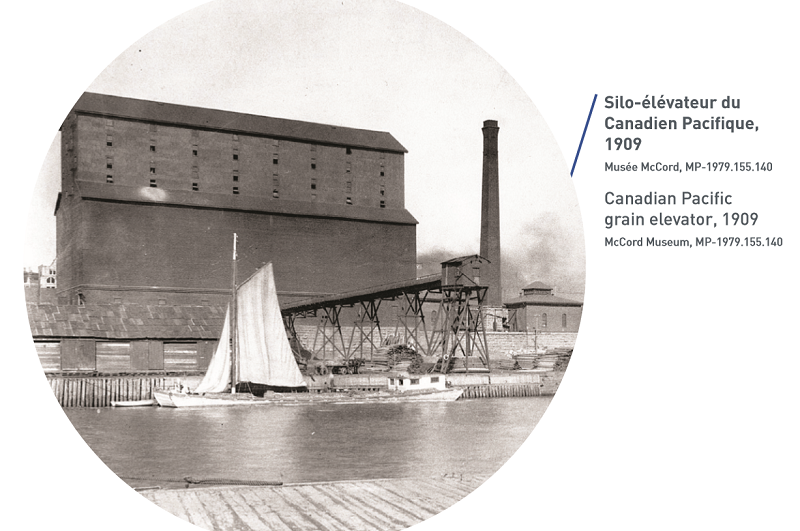
1908
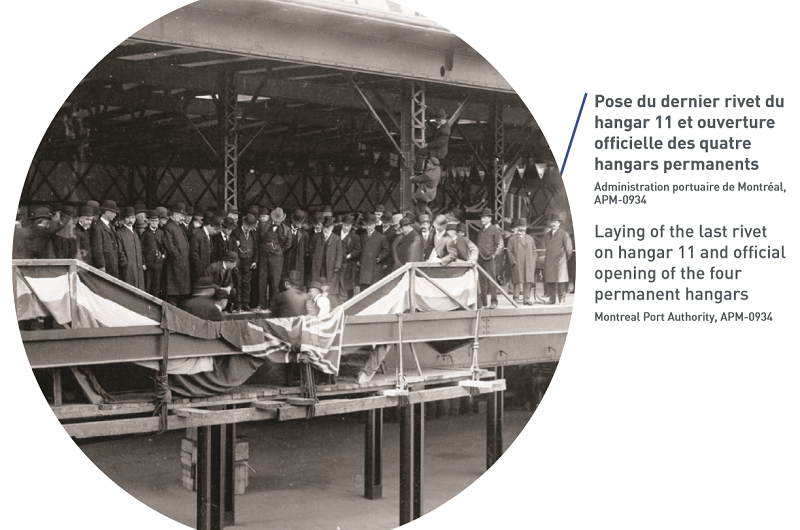
1910-1912
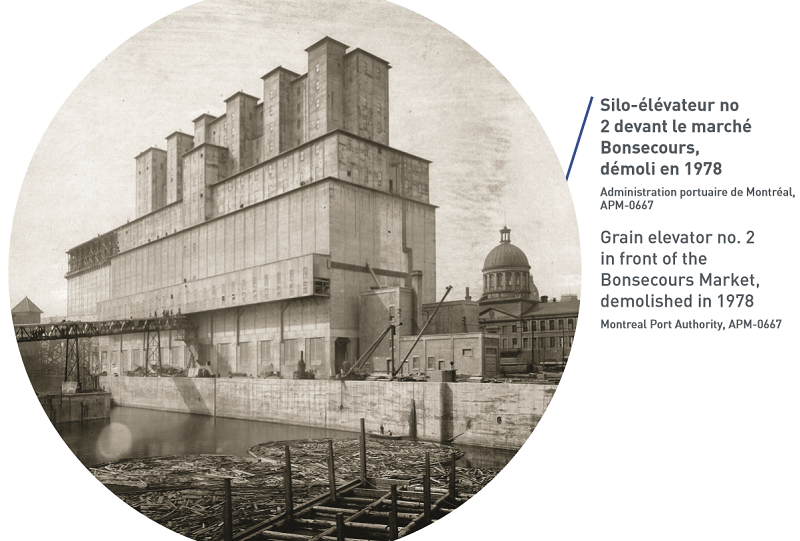
1922
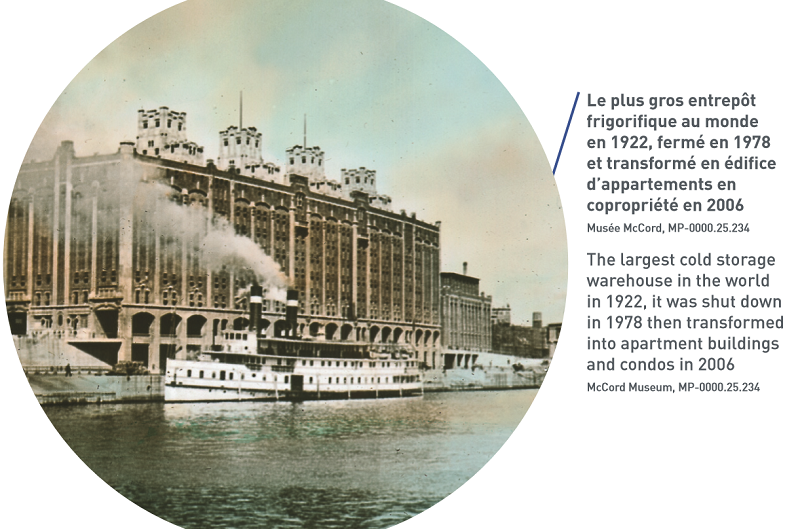
1926
Montreal, the largest grain port in North America
1930
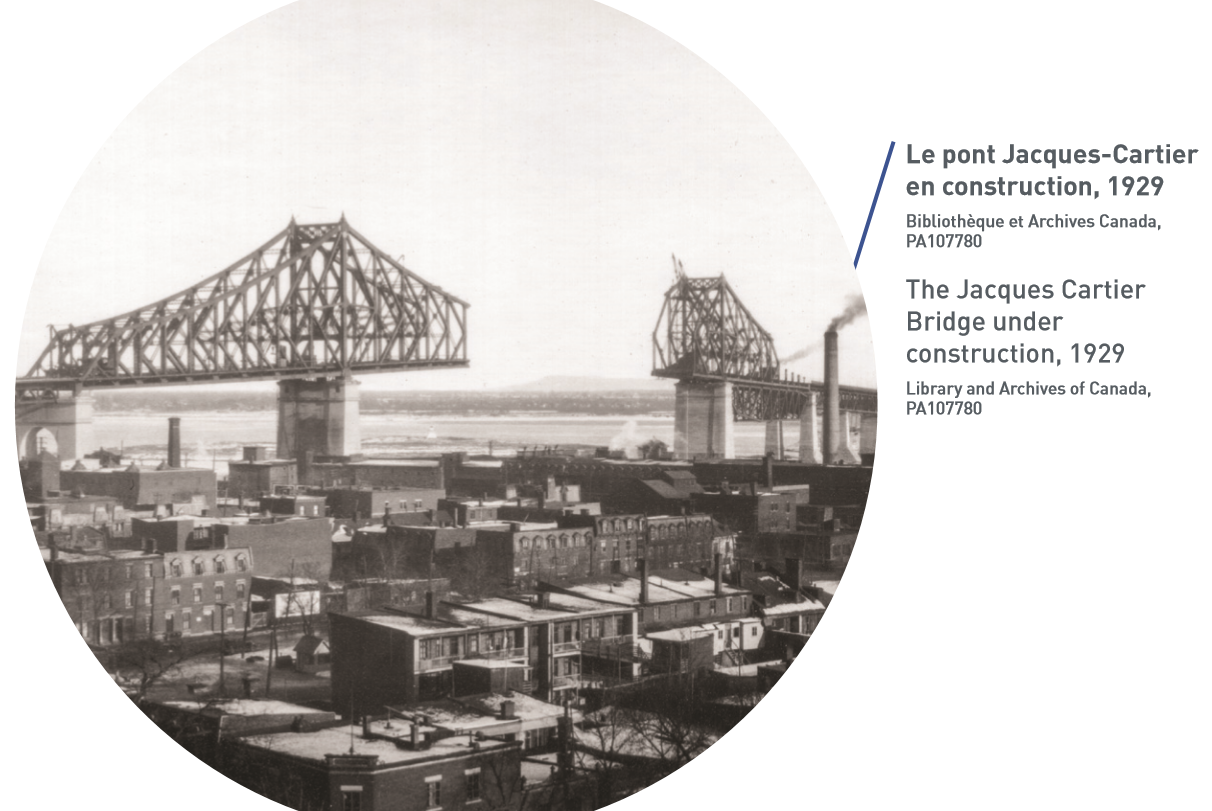
1936
Creation of the National Harbours Board and abolition of the regime of the Harbour Commissioners of Montreal
1947
Use of the port by 25 marine shipping companies, 8 months a year
1959
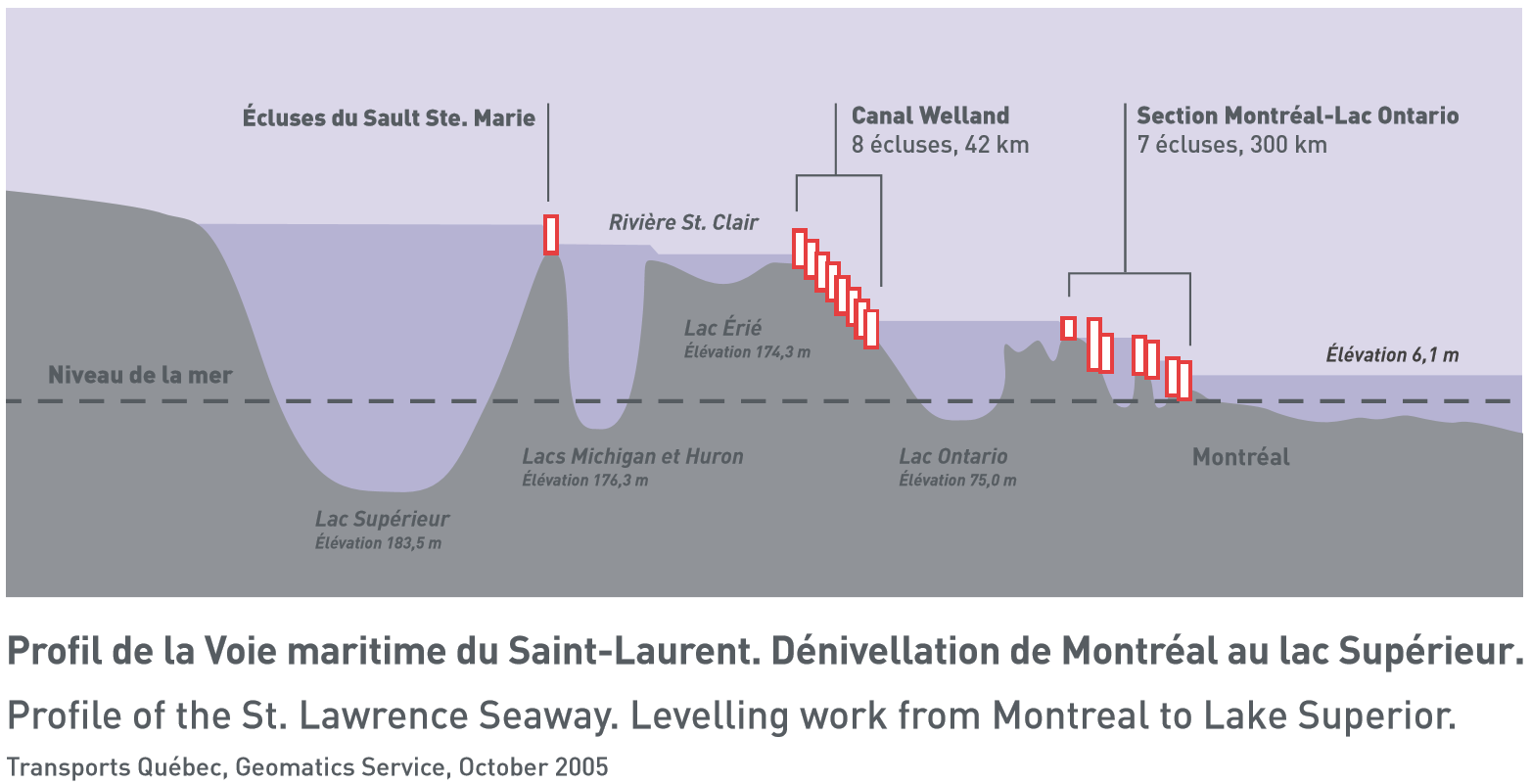
1964
The Old Port is declared a “Heritage Site” by the Government of Quebec
1964
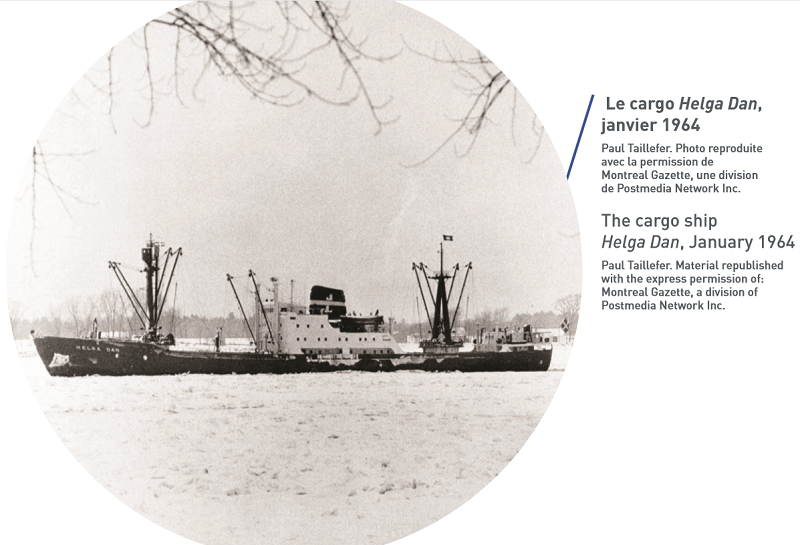
1967
1967
The Port of Montreal handles its first container
1968
Inauguration of the first Canadian container terminal in Montreal
1970
Closing of the Lachine Canal to commercial shipping
1977
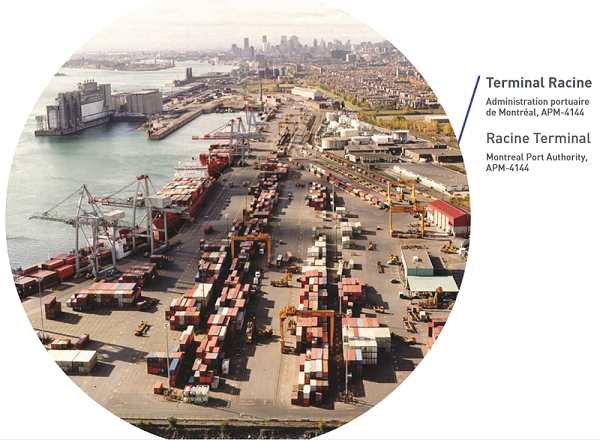
1978
A constantly-evolving port
1983
Creation of a new port management organization, the Montreal Port Corporation
1988
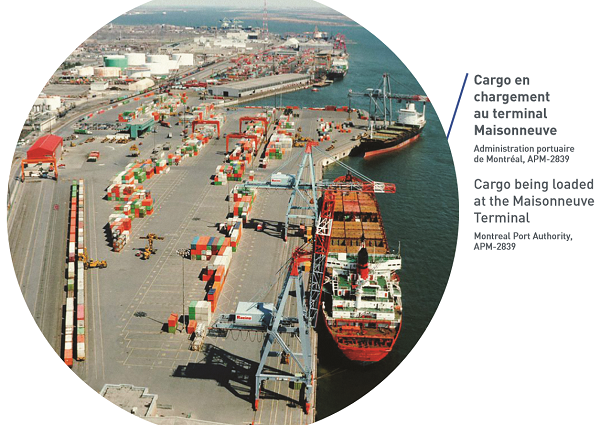
1992
New channel dredging between Quebec City and Montreal, bringing its depth to 11.3 m.
1999
Creation of the Montreal Port Authority and setting of a new record
2006
New record: 25 million tons of bulk and container cargo handled
2007
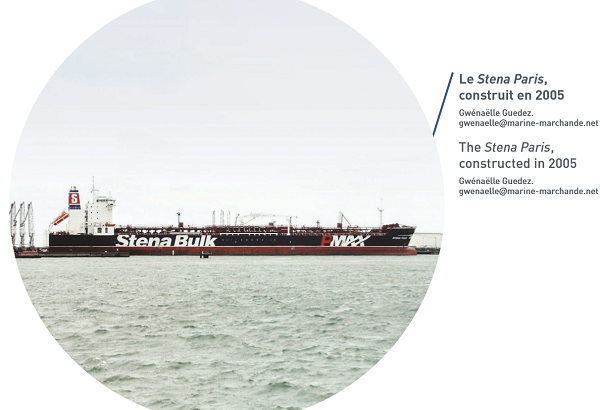
2008
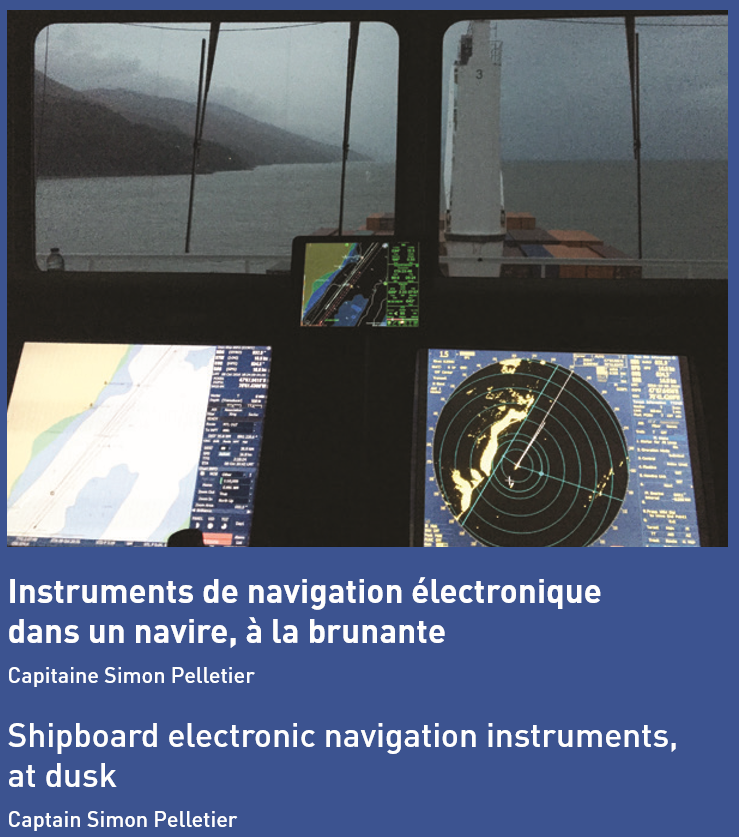
2010
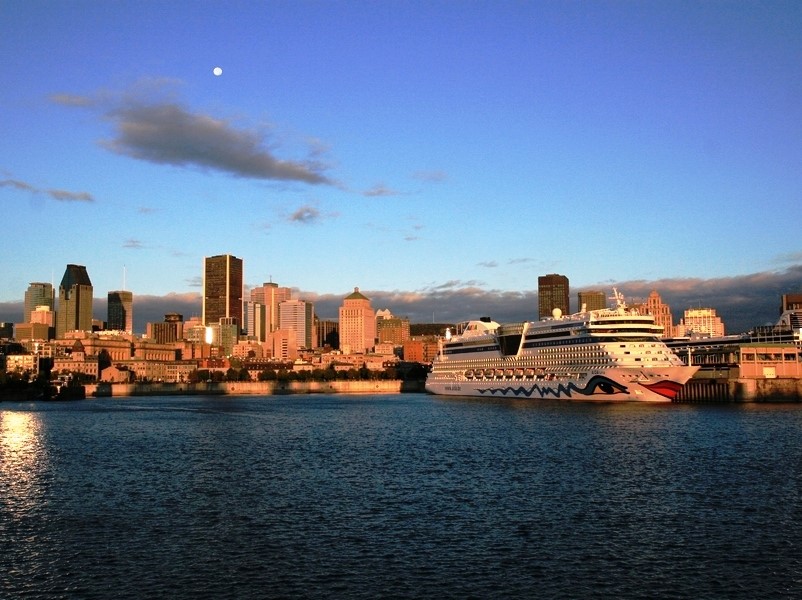 On September 23, the cruise ship AIDAluna docks for the first time at the Alexandra Pier. With 2,100 passengers on board, it is the largest cruise ship to go as far up the St. Lawrence, overcoming the challenges of passing under bridges in Quebec City and Trois-Rivières. International cruises along the St. Lawrence are becoming more and more popular, especially when the landscapes along the shoreline are bathed in fall colour.
On September 23, the cruise ship AIDAluna docks for the first time at the Alexandra Pier. With 2,100 passengers on board, it is the largest cruise ship to go as far up the St. Lawrence, overcoming the challenges of passing under bridges in Quebec City and Trois-Rivières. International cruises along the St. Lawrence are becoming more and more popular, especially when the landscapes along the shoreline are bathed in fall colour.
2012
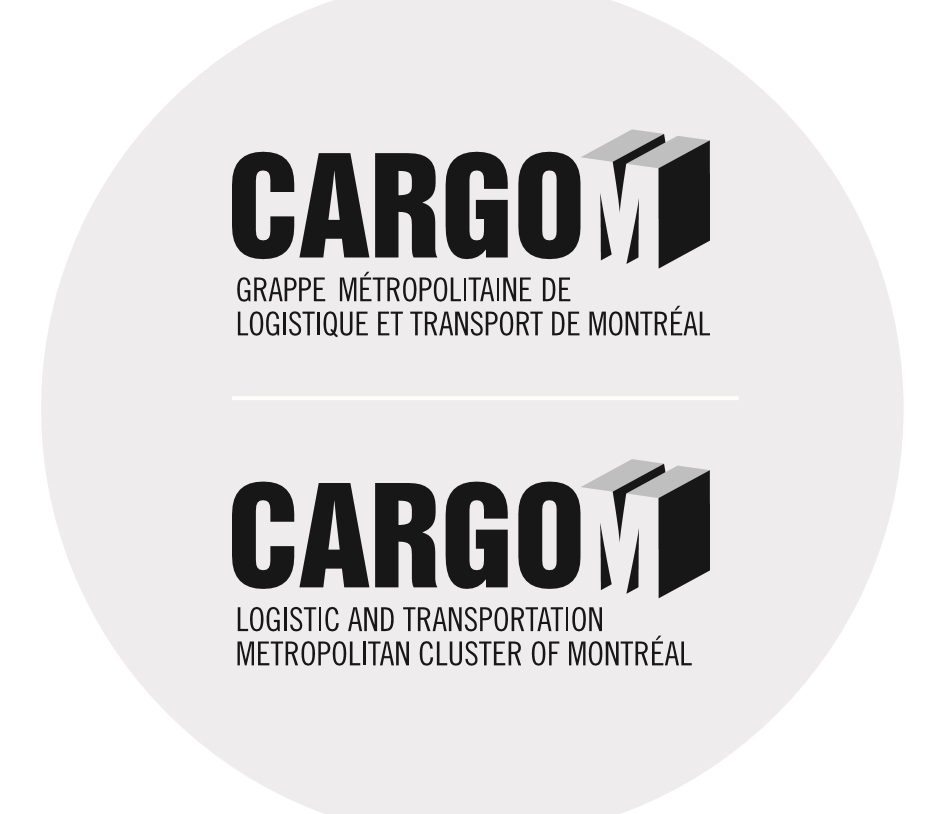
2013
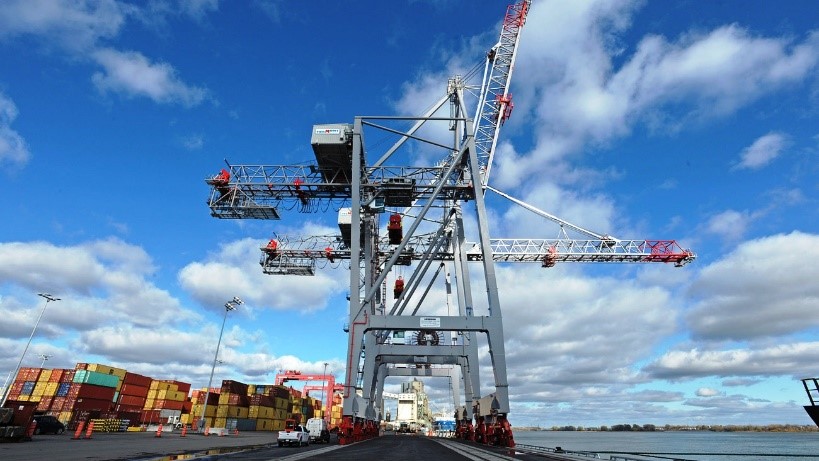
Opening of the Port of Montreal to post-Panamax ships, with widths of 44 m
2016
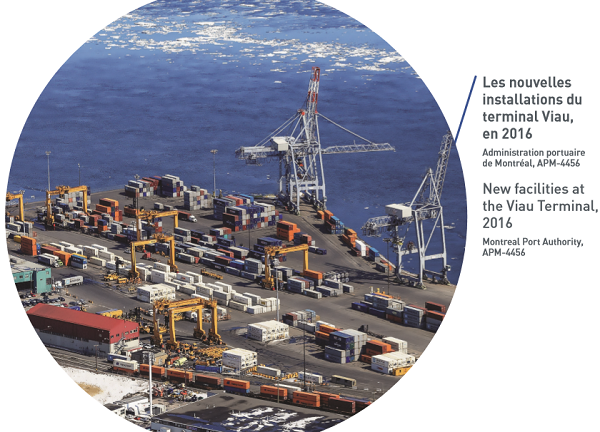
2017-2018
Inauguration of the Grand Quay and its new services for cruise ships
2020
Finalization of work on the Viau terminal and continuation of the planning of the Contrecoeur terminal
The Viau terminal is officially completed: in December 2020, the 2nd phase of works ends, bringing the terminal's capacity to 600,000 EVP containers.
The Contrecoeur terminal project reaches an important milestone with the announcement of $300 million in financing from the Canada Infrastructure Bank and the release of the Impact Assessment Agency of Canada's draft report.
2022
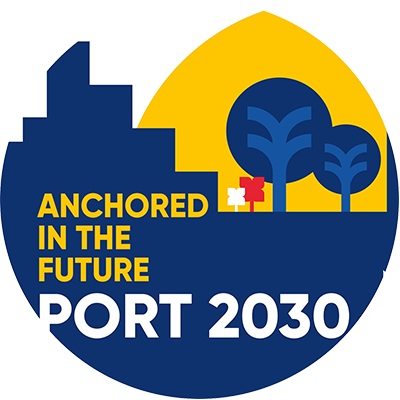 Port 2030 consultation process
Port 2030 consultation process
2023
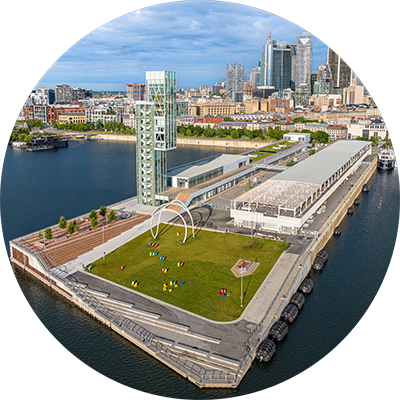 Inauguration of the Port of Montreal Tower
Inauguration of the Port of Montreal Tower

